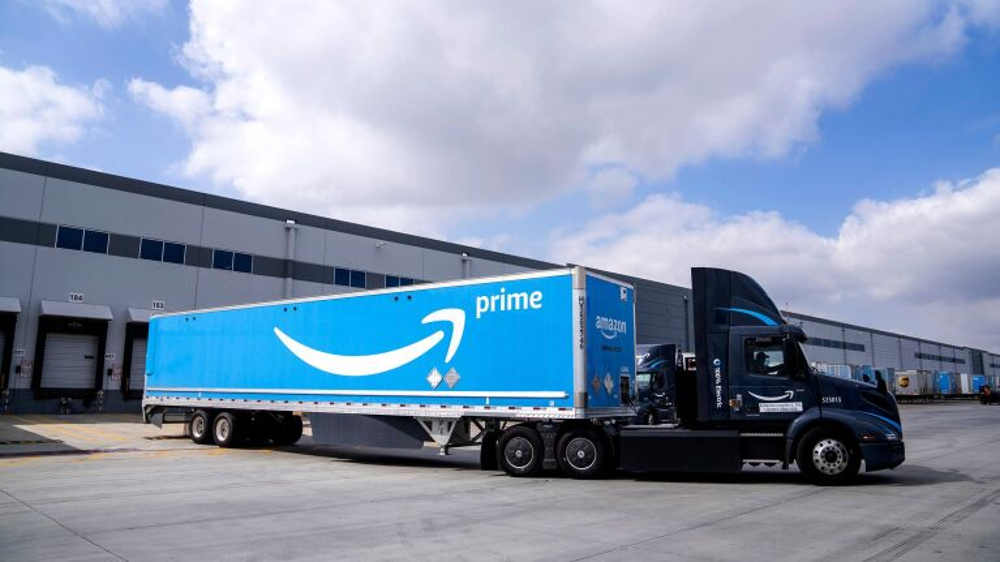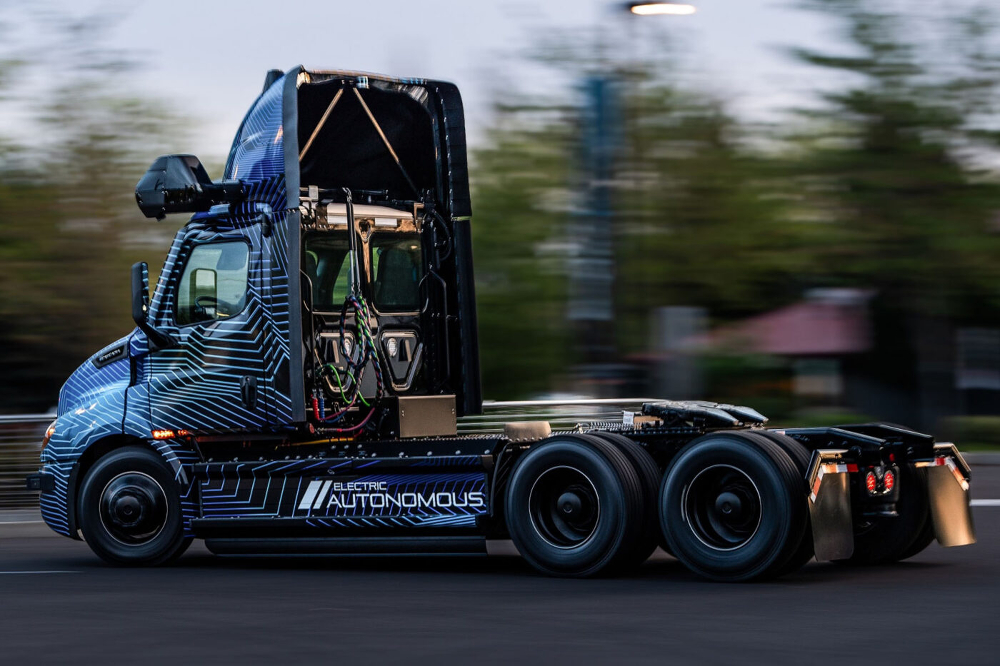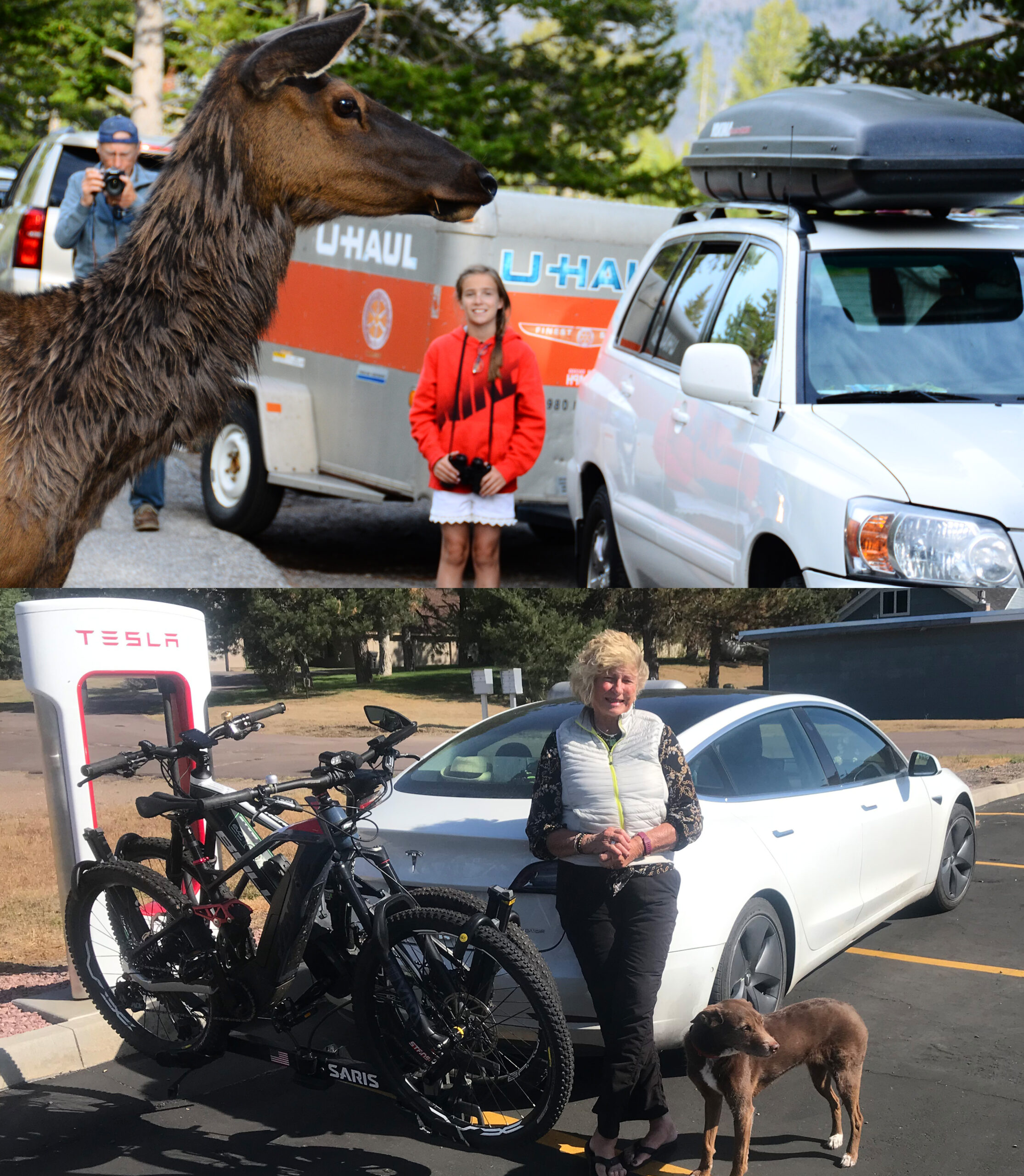Sign up for daily news updates from CleanTechnica on email. Or follow us on Google News!
A few days ago, we told our readers about how ASKO, Norway’s largest food distributor, has converted much of its fleet to electric trucks. (It is also using electricity from rooftop solar panels to charge them.) In the US, the transition to electric trucks is also picking up speed, especially in Southern California.
Why? Because SoCal is where the majority of products manufactured in foreign countries enter the United States. Millions of shipping containers arrive in its ports every year. First they have to be unloaded from the ships that transported them across the Pacific using diesel-powered cranes, then diesel-powered yard trucks shuttle them around the terminal. Finally, they are hauled by other diesel-powered trucks to massive distribution centers where they are sorted and assigned to other long-haul diesel trucks that will move them to regional warehouses all across America.
The volume of freight is so large that detritus from all those diesel exhaust pipes makes the air along the highways that connect the ports to the inland distribution centers so toxic that it is often harmful for humans to breathe. That’s why the State of California for years had been trying to replace some of those snorting diesels with low- and zero-emissions Class 8 trucks.
Amazon is one of the largest marketing companies in the world and imports gigatons of stuff every year. This week, it announced it is adding almost 50 battery-electric trucks to its fleet of vehicles in California as part of its plan to decarbonize every step of the delivery process. The fully electric trucks will haul cargo containers and customer packages in its first and middle mile operations so they can be delivered by hundreds of last-mile electric vans all across California. Combined, the trucks are expected to travel more than 1 million miles each year with zero tailpipe emissions.
Electric Trucks For First Mile, Middle Mile, And Last Mile

In freight logistics, “first mile” refers to moving goods from where they are manufactured, through customs, across oceans, into ports, and then into the Amazon fulfillment network. A dozen Volvo electric trucks will be added to Amazon’s first-mile fleet by the end of 2024. Those trucks will transport containers from the ports of Los Angeles and Long Beach to an Amazon facility in Santa Fe Springs, California.
Amazon is also adding more electric trucks to its middle-mile operations, which move customer orders between fulfillment centers, sort centers, and air facilities to delivery stations, where packages are loaded into last-mile vans to be delivered to customer doorsteps. Amazon has deployed 35 heavy-duty electric trucks in Southern California to support its middle-mile operations and has installed more than 45 DC fast chargers at 11 sites to keep those trucks charged.
“We’re proud to launch our largest fleet of electric heavy duty vehicles yet in California,” said Udit Madan, vice president of Worldwide Amazon Operations. “Heavy duty trucking is a particularly difficult area to decarbonize, which makes us all the more excited to have these vehicles on the road today. We’ll use what we learn from deploying these vehicles as we continue to identify and invest in solutions to reduce emissions in our transportation network, and to impact sustainability in the trucking industry more broadly.”
Governor Gavin Newsom said, “California continues to lead the way in setting world-leading climate goals. No other state has created the kind of environment where Amazon and other businesses can lead on sustainability and take major steps forward like deploying this fleet of electric trucks. California’s climate action continues powering our economy and creating jobs.”
The Class 8 electric trucks Amazon is adding to its logistics fleet are Volvo VNR electric models with a range of up to 275 miles and a gross combination weight of 82,000 pounds. They are all equipped with safety features, including active collision mitigation, blind spot detection, lane departure warning, lane keeping assist, and adaptive cruise control. Drivers are excited about these electric trucks, Amazon says, because of their impressive power, lower noise levels, and ergonomic cab design.
“Within Amazon’s operations the Volvo VNR Electric will provide zero tailpipe emissions transportation across a variety of different applications efficiently and sustainably. The Volvo VNR Electric was built on the already proven regional haul VNR platform which makes it well suited for drayage and middle-mile operations, particularly in areas of dense population and moderate to heavy traffic volumes,” said Keith Brandis of Volvo Group North America. “We are thrilled to work with Amazon’s expansive fleet on their electromobility transition and help to pave the way for a more efficient and sustainable future.”
Amazon says its fleet of zero emissions electric trucks will continue to grow as it invests in solutions across its operations to help achieve its goal of net-zero carbon emissions by 2040. Amazon has been operating electric yard tractors since 2019 and now has over 140 of them engaged in moving trailers around its sites in the US. It also now has over 13,000 electric delivery vans manufactured by Rivian in service in America.
Autonomous Class 8 Electric Trucks From Daimler

Volvo is not the only manufacturer making Class 8 electric trucks. Daimler Trucks, which owns Freightliner, is bringing them to market as well. As part of its development process, Daimler is also working on autonomous versions of its electric trucks that could help drivers better manage long hours behind the wheel. Eventually, operation without a human driver may be possible on certain carefully designed routes.
The Freightliner eCascadia is the basis for the suite of autonomous driving technologies currently under development in cooperation with Torc Robotics, a Daimler subsidiary. The company told Electrive it is currently focused on hub-to-hub applications in which the electric trucks drive autonomously between freight centers located along US highway corridors. In a possible future scenario, the charging infrastructure and autonomous logistics centers could be brought together so that the charging process could take place at the same time as the loading process, which would further increase efficiency for transport companies.
Torc Robotic has been conducting trials of the autonomous Freightliner Cascadia trucks in real-world applications with selected logistics companies such as Schneider and C.R. England for a year now, moving freight autonomously on a test route between Phoenix, Arizona, and Oklahoma City, Oklahoma.
Daimler wants to bring autonomous trucks to the US market by 2027. The autonomous technology will be developed into a modular, scalable platform that is independent of the drive technology and can be used flexibly in various truck applications. According to the press release, the aim is to offer autonomous driving customers a wider range of vehicles in the future to meet their specific transport requirements and applications.
“Together with Torc Robotics, we are making significant progress towards the planned introduction of autonomous trucks in the US in 2027. While we are focusing on autonomous trucks with conventional drive technology for this initial market launch, we are always looking further into the future. We will take an iterative approach to developing, testing and optimizing autonomous and zero-emission driving technologies, working with our fleet customers to explore the most promising use cases,” said Joanna Buttler, the head of the Global Autonomous Technology Group at Daimler Truck. The company is targeting sales of more than three billion euros from autonomous driving systems for trucks by 2030.
China Leads On Electric Trucks
While all this news about Amazon transitioning its freight operations to electric trucks is welcome, the fact that America may be adding a few hundred electric trucks soon pales in comparison to what is happening in China. Bloomberg reports that, thanks to generous government incentives, fuel cell powered electric truck sales are surging, with more than 1,000 sold in December. Of course, if the source of the hydrogen for those trucks is methane gas, the cure may be worse than the disease.
But there is another side to the electric trucks story in China — battery swapping. Bloomberg analyst Siyi Mi recently compiled data on all the battery-swappable vehicles sold in the country and found that almost half of all heavy-duty battery electric trucks sold in China last year had the ability to swap out depleted batteries. That’s up from one third of electric trucks in 2021. In all, over 5,600 electric trucks were sold in China during December — 10 percent of total truck sales. In the US, sales of electric trucks are nowhere near the 10 percent level.
Many of these electric trucks are operating at industrial sites, port warehouses, mines, and steel factories. Lighter commercial vehicles with swappable batteries also are being used in urban deliveries, an area where BNEF expects to see more growth as better economics and tightened emission requirements draw more attention to electric trucks. Long-haul trucking will be the last and most difficult segment to tackle, Bloomberg says.
Swapping batteries may be an interim way to manage the task of charging electric trucks, but Bloomberg says as battery prices continue to fall and charging speeds continue to increase, battery swapping will probably become less popular for electric trucks in China, especially if there is a significant increase in the number of megawatt chargers available across the country.
The Takeaway
The good news is that electric trucks are beginning to come to market in significant numbers. Decarbonizing road transportation depends on the transition to electric trucks accelerating. One factor that makes those trucks appealing to fleet operators is their lower costs of fuel and maintenance. With those economic advantages working in their favor, expect the number of electric trucks to increase dramatically in the years to come.
Have a tip for CleanTechnica? Want to advertise? Want to suggest a guest for our CleanTech Talk podcast? Contact us here.
Latest CleanTechnica.TV Video
CleanTechnica uses affiliate links. See our policy here.





